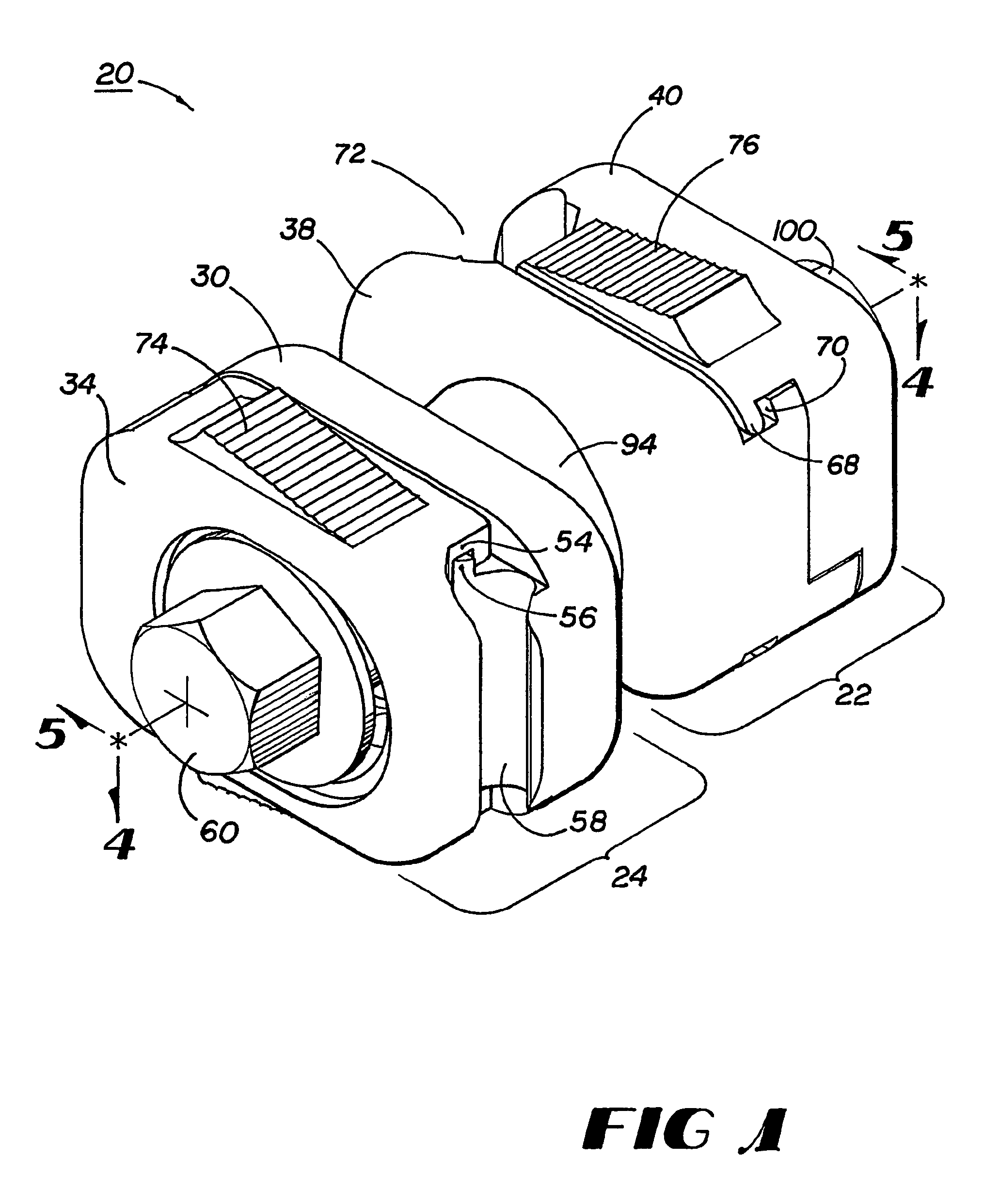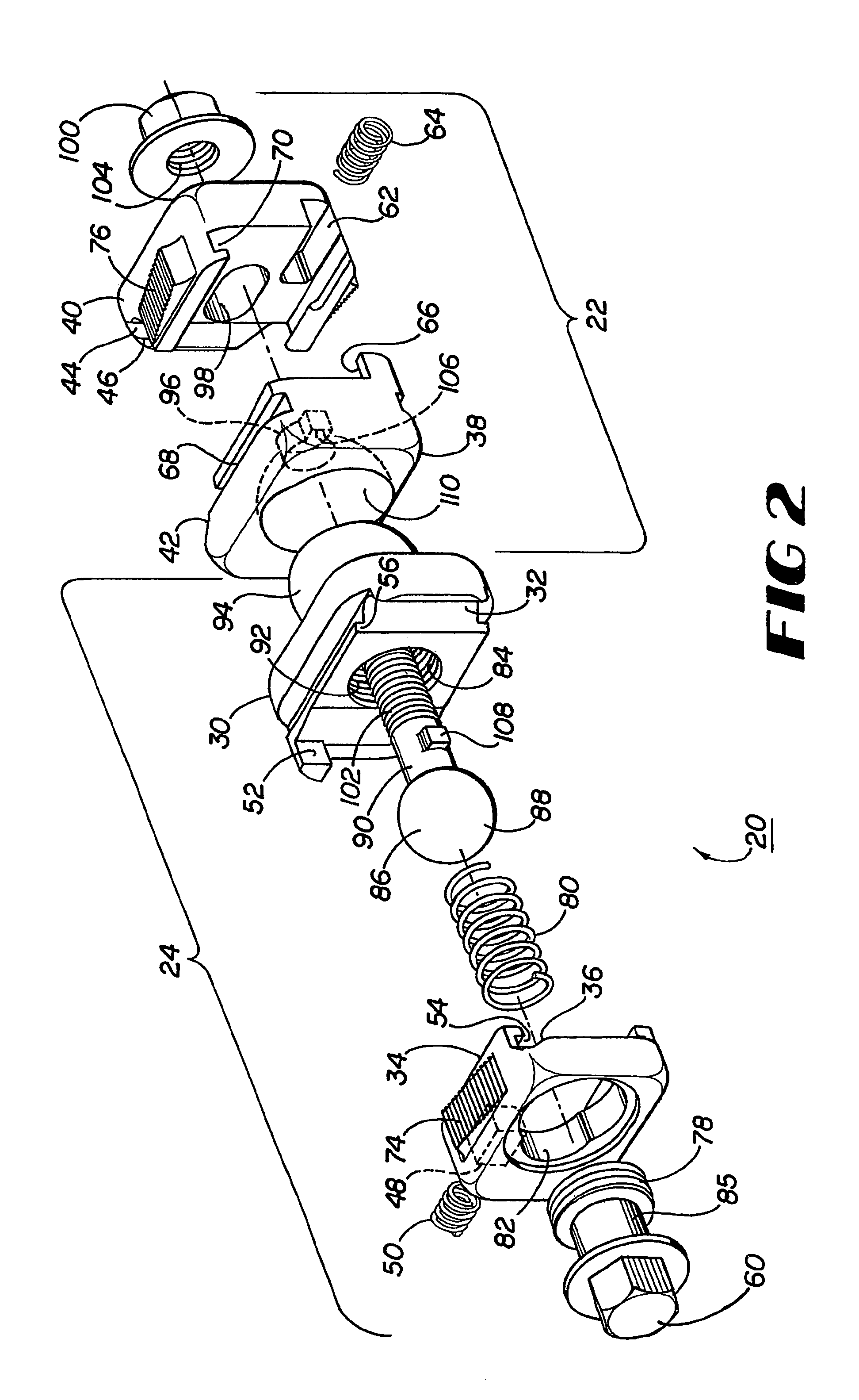Device and methods for placing external fixation elements
a technology for fixing elements and devices, applied in the field of methods, systems and devices for orthopedic external fixation, can solve the problems of frame not being properly constructed, frame becoming less adjustable, and difficult to achieve additional reductions
- Summary
- Abstract
- Description
- Claims
- Application Information
AI Technical Summary
Benefits of technology
Problems solved by technology
Method used
Image
Examples
Embodiment Construction
[0036]Methods, systems, and devices according to this invention seek to provide improved external fixation, including an improved fixation component allowing an increase in freedom of rotation, independent locking of capture members, a more stable, yet more flexible frame, and cooperation with specialized fixation systems. External fixation systems according to embodiments of this invention may include fixation components designed to retain one or more fixation elements. In general, the fixation components either connect a bar to a bar; a bar to a pin; a bar to a wire; or a bar to a circumferential or half ring. Each fixation component generally includes two capture members, and each capture member includes a base and a head. Methods, systems, and devices according to this invention also provide drill guides for optimal placement of fixation elements into a patient's bone, as discussed in further detail below.
[0037]One embodiment of a fixation component according to this invention i...
PUM
 Login to View More
Login to View More Abstract
Description
Claims
Application Information
 Login to View More
Login to View More - R&D
- Intellectual Property
- Life Sciences
- Materials
- Tech Scout
- Unparalleled Data Quality
- Higher Quality Content
- 60% Fewer Hallucinations
Browse by: Latest US Patents, China's latest patents, Technical Efficacy Thesaurus, Application Domain, Technology Topic, Popular Technical Reports.
© 2025 PatSnap. All rights reserved.Legal|Privacy policy|Modern Slavery Act Transparency Statement|Sitemap|About US| Contact US: help@patsnap.com



